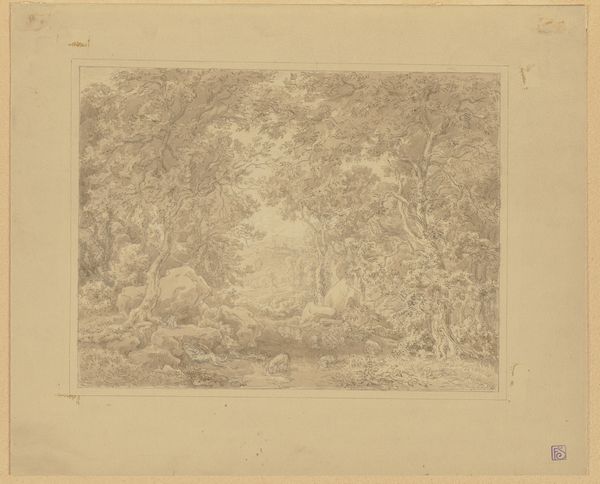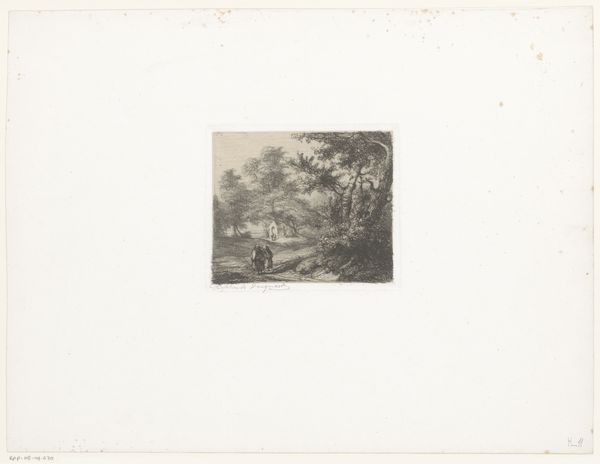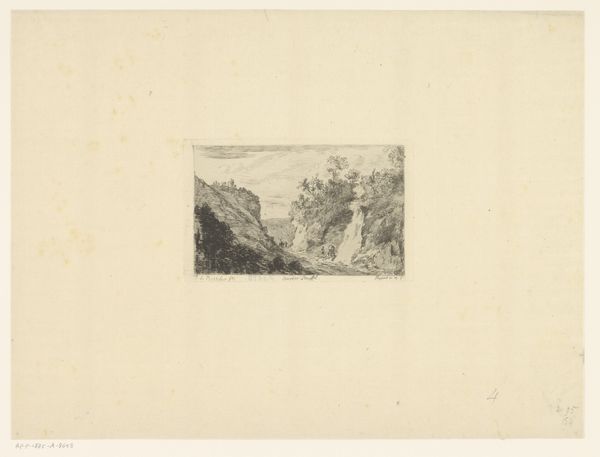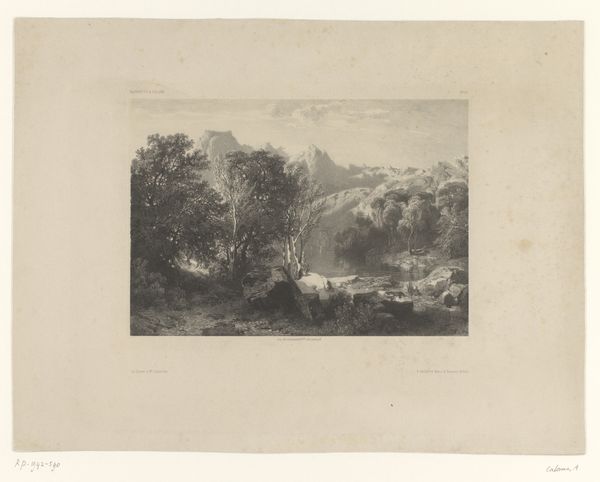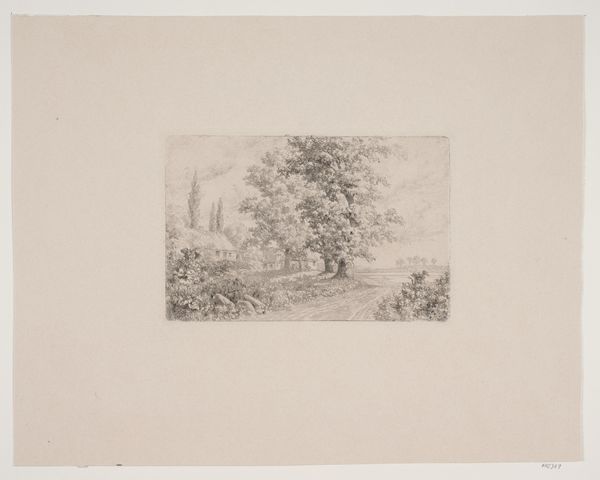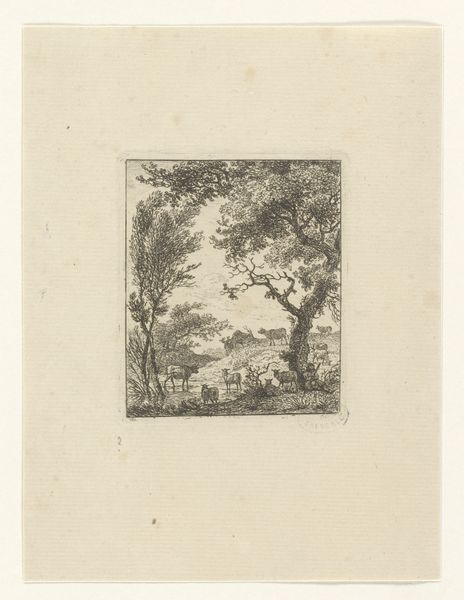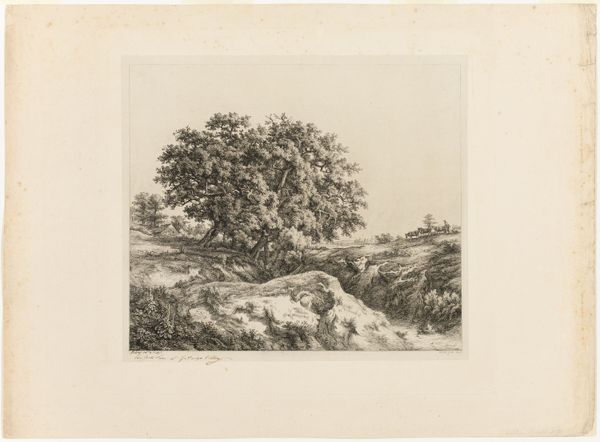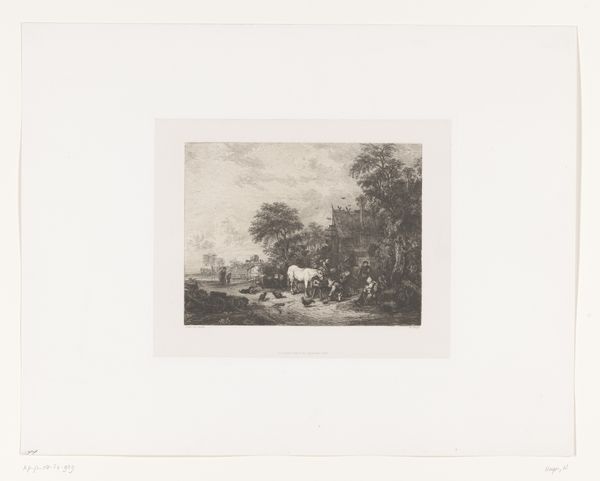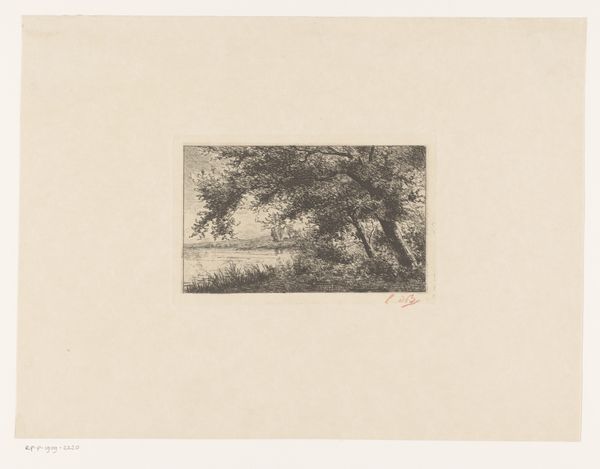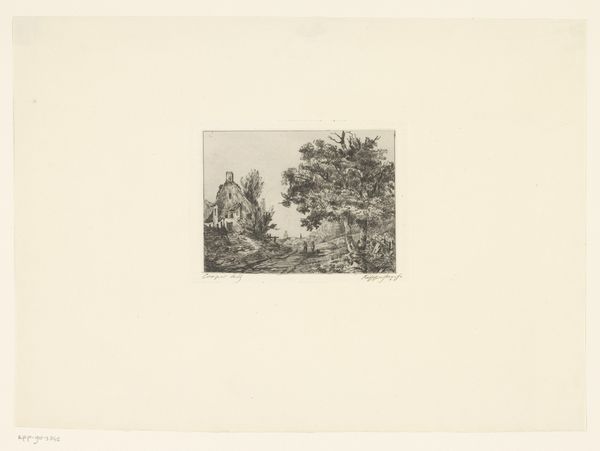
drawing, etching, ink, pencil
#
drawing
#
16_19th-century
#
etching
#
pencil sketch
#
landscape
#
etching
#
ink
#
pencil
Copyright: Public Domain
Curator: Immediately, I'm struck by the intricate details and the overwhelming feeling of quiet contemplation this landscape evokes. Editor: Andechs am Ammersee, rendered in pencil, ink and etching by Ludwig Metz, presents us with a carefully observed view. What draws me in immediately is the evident labor involved in creating this image, particularly in the way the different materials combine to form the intricate landscape. Curator: Yes, there is an undeniable skill at play. But beyond technique, what can you tell me about the kind of landscape presented, and maybe what ideologies shaped it? I think, when looking at an image like this, the cultural framing can never be divorced from the pure material quality you point to. Editor: I agree, these things can't be separated. Here, the soft pencil underdrawing suggests a specific mode of artistic production, while the etched lines overtop grant a graphic clarity needed for printmaking and, eventually, wide distribution, indicating the artist's economic reliance on the landscape. Curator: Absolutely. The composition leads my thoughts to concepts of Romanticism— the human figure is diminutive if not absent, emphasizing nature's vastness and a kind of sublime solitude. Given this era, these images aren't merely neutral portrayals of landscape. They become implicated in the development of German national identity and even concepts of "Heimat" tied up with ethnicity, nation, and exclusion. Editor: It's not only a site for these political ideologies; this location is a working landscape shaped by economic interactions and local industry. What can be made and used from this land? I imagine also that questions of ownership are immanent within the artwork’s structure of both organic pencil sketches with intentional line and planned distribution by etching. Curator: This makes me consider who had the ability, resources, and privilege to consume and circulate these kinds of images? The landscape often masks the power structures implicit in owning, viewing, and aesthetically consuming nature. And I appreciate that your thoughts focus on how material choices shape meaning within a set of such conditions! Editor: Precisely. Ultimately, Metz’s work pushes me to really consider how the commodification of landscape intertwines art, labor, and environment—revealing complex relationships beneath its picturesque surface. Curator: So, it's in the careful blending of material and social readings that this quiet image gains resonance for us now, forcing us to see more than what immediately meets the eye.
Comments
No comments
Be the first to comment and join the conversation on the ultimate creative platform.
